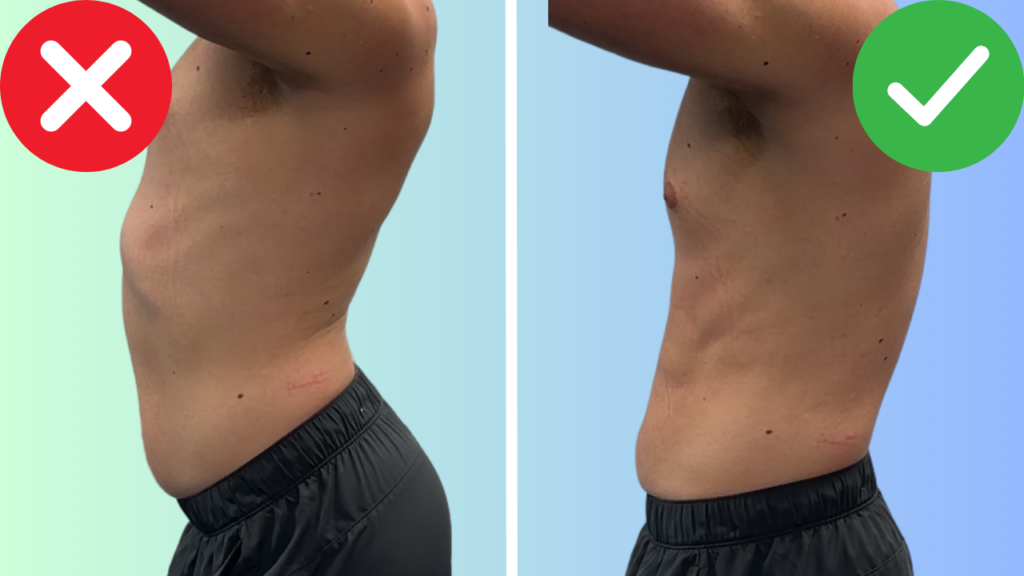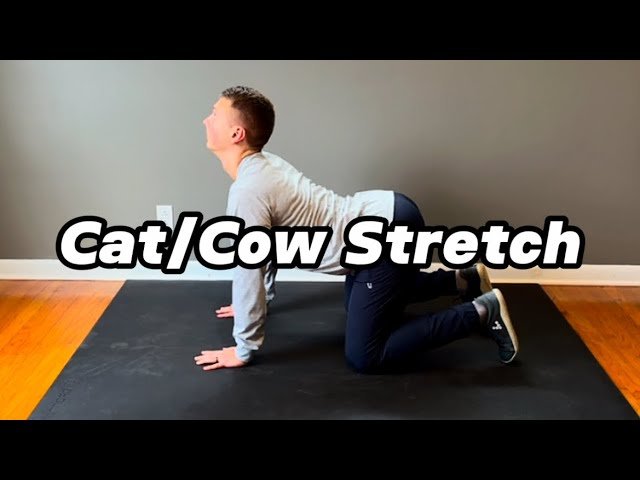
How to FIX your Anterior Pelvic Tilt for Good! – Mobility Suite
- Dr. Mitch Israel
- Anterior Pelvic Tilt, Posture

How to Fix Anterior Pelvic Tilt: Top Exercises and Tips for Better Posture
Are you experiencing discomfort and postural issues related to anterior pelvic tilt? You’re not alone. Anterior pelvic tilt, characterized by an excessive forward rotation of the pelvis, can lead to a range of problems like lower back pain, tight hip flexors, and poor posture. But the good news is, with the right anterior pelvic tilt exercises, you can correct this issue and restore balance to your pelvis and spine. In this comprehensive guide, I’ll walk you through three essential steps to fix anterior pelvic tilt for good.
If you prefer videos, watch the video version below!
Step 1: Reduce Lower Back Tension
Before diving into the solutions, it’s crucial to understand the causes of anterior pelvic tilt. The condition often arises from muscle imbalances due to:
- Prolonged sitting
- Weak core muscles
- Tight hip flexors
- Poor posture habits
- Weak glutes and hamstrings
Identifying the root cause will help you better target your anterior pelvic tilt exercises for maximum effectiveness.
Step 1: Reduce Lower Back Tension
The first step in addressing anterior pelvic tilt is to alleviate tension in your lower back. Common causes of anterior pelvic tilt include tight lower back muscles, which pull the pelvis forward. One simple way to begin is with Child’s Pose Breathing (perform 10-15 breaths for 1-2 sets). This exercise helps reduce tension and calm the nervous system. Here’s a list of other common causes of Anterior Pelvic Tilt:
- Prolonged sitting
- Lack of core strength
- Weak gluteal muscles
- Tight hip flexors
- Tight lower back muscles
- Poor posture habits
- Imbalanced muscle development
- Excessive high-heeled shoe wear
- Pregnancy and childbirth
- Certain types of exercise routines
This is a very simple and effective way to use your breath to calm down your nervous system and reduce lower back muscle tension.
*Below is a playlist of all the video references for the movements described in this article.
Playlist
Step 2: Restore Lumboplevic Motion
Once you’ve reduced lower back tension, it’s time to restore motion in the lumbopelvic area. The Cat/Cow Stretch is a highly effective way to improve spinal mobility. By improving range of motion in your lumbar and pelvic regions, you can fix anterior pelvic tilt and improve overall posture. (Perform 10-15 reps for 1-2 sets.) Here is a list of why lumbopelvic range of motion is so vital:
- Proper biomechanics
- Prevention of lower back pain
- Enhanced athletic performance
- Improved posture
- Reduction of injury risk
- Optimal functional movement
- Efficient distribution of forces
- Enhanced quality of life
- Maintenance of spinal health
- Better overall mobility
Step 3: Reinforce with Core Stability
The third step is to address core stability for pelvic tilt. A weak core is one of the primary causes of anterior pelvic tilt. Core strengthening exercises like Prone Rocking can help stabilize the pelvis and alleviate excessive strain on the lower back. (Perform 10-15 reps for 1-2 sets.) Improving your core strength ensures that your pelvis stays aligned and properly supported.
Stretch and Strengthen the Hip Flexors and Glutes
In addition to addressing the core, incorporating anterior pelvic tilt exercises that stretch tight hip flexors and strengthen weak glutes can further help correct the tilt. Hip flexor stretches and glute bridges are excellent exercises to incorporate. Aim to include these movements into your routine 2-3 times a week to help restore balance in your hip and pelvic muscles.
Conclusion
Anterior pelvic tilt can lead to discomfort and long-term postural issues, but with the right combination of anterior pelvic tilt exercises, core strengthening, and hip mobility work, you can successfully fix anterior pelvic tilt. By addressing the causes of anterior pelvic tilt—such as weak core muscles and tight hip flexors—and focusing on core stability for pelvic tilt, you can regain proper posture and alleviate lower back pain. So don’t wait—start incorporating these exercises today for long-lasting benefits.
Join the Movement
Unlock the path to freedom from anterior pelvic tilt by joining the Mobility Suite App today and start my exclusive 3-week “Anterior Pelvic Tilt Correction” program.
Designed to target and alleviate tightness in your lower back and hips, this program offers a comprehensive approach to improving core stability and reducing discomfort. With a focus on targeted exercises and expert guidance, you’ll uncover a renewed posture and ease of movement.
Plus, take advantage of our 7-day free trial by clicking the button below, ensuring you have nothing to lose but your Anterior Pelvic Tilt. Don’t let discomfort hold you back any longer—join today and take the first step toward a more mobile and pain-free lifestyle.







